Lessons on arpeggio practice on the piano are among our most requested videos, and for good reason! Arpeggios don’t just sound stunning. They’re also an opportunity to practice skills like speed, rhythm, and hand independence
Here’s an arpeggio practice routine that will take your playing to the next level.
Each pattern is designed to ramp the difficulty level up a notch, but don’t worry. Beginners can master these arpeggio practice routines on the piano too!
Let’s start easy. On your left hand, play a simple arpeggio progression in four chords:
The chord shapes will look like this:
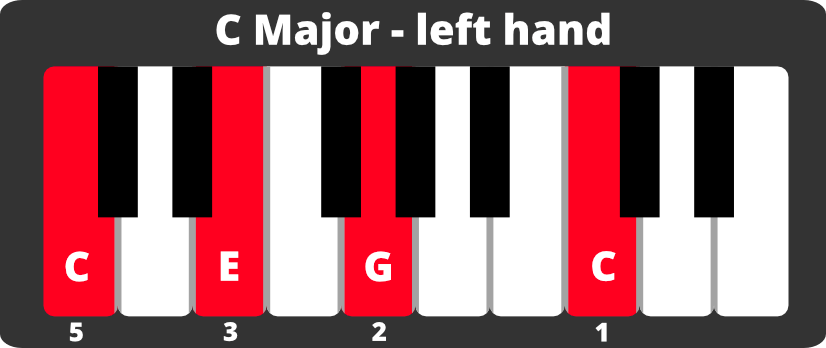
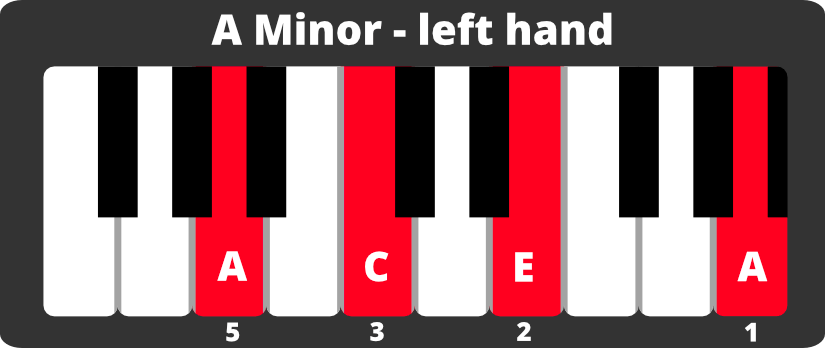
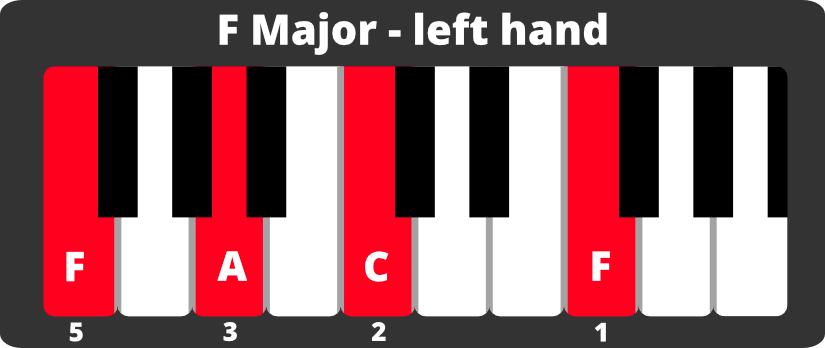

🔥🎹 Hot Tip! When it comes to fingering, use what feels good to YOU. Some people like playing these four-note chords with fingers 1-4-3-1, for example, and that’s a-ok!
Get comfortable with these shapes on your left hand first. Then, gently roll between these notes.
Make sure your hand is loose and relaxed as you rotate your wrist. If you have small hands, avoid getting sore by releasing your pinky note right after you play it.
Once your left hand feels comfortable, try adding the root note of each chord on your right hand.
Next, let’s try a really stunning pattern that is awesome to improvise with.
We’ll cross over and tuck under our finger 1 (thumb). If you’re unfamiliar with this movement, practice slowly a few times. You can rewind the video a few times too.
Here are the notes and fingering for reference:
Notes:
C-G-C-D-E-D-C-G
Fingering (Left Hand):
5-2-1-2-1-2-1-2
Once your left hand feels good, add a fifth (for example, C-G for the C major chord) on your right hand.
For an extra challenge, play that fifth every time you hit C on your left hand.
On to the next level! I want you to play the same cross over/tuck under pattern on your left hand and add a sus chord on your right hand.
If you’re new to sus chords, these cheat sheets might help:
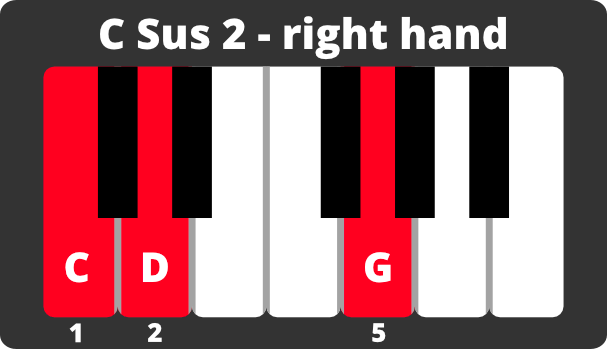
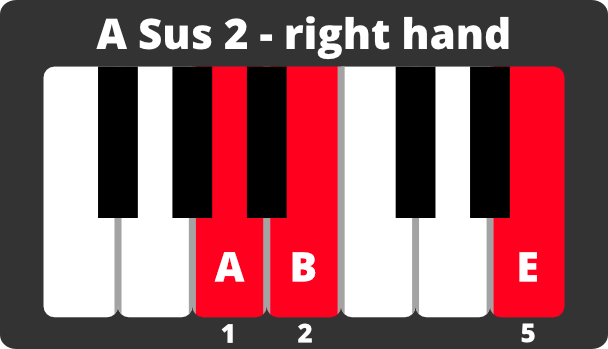
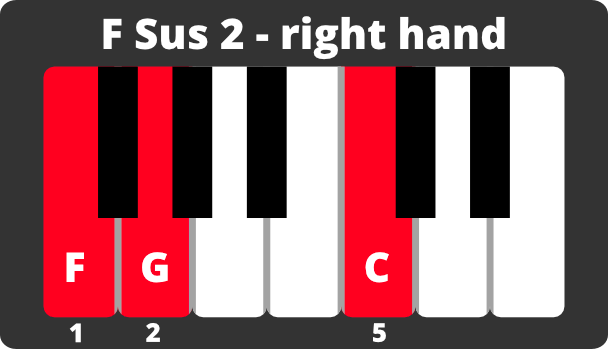

Once those sus chords are under your belt, break up the notes and match them up with your left hand. It’s okay to slow down in order to practice this.
Yep, it’ll feel like that at first! Totally normal 🙃
Next, we’ll play the broken C Sus 2 notes going up and down.
If you’re struggling with this, start slow. Really feel the downbeat as you match the notes.
Get comfortable playing C Sus 2 on top of the arpeggio first, then move through the other sus chords.
Refer back to the sus chord cheat sheets if you need to 🙂
Let’s add more exciting stuff to the right hand! Try a two-octave C major arpeggio like this:
You’ll see that my elbow leads me up and down the keyboard. You don’t want to be so loosey-goosey that you develop chicken wings, but do keep those arm muscles flexible 🐔
Practice this sloooowly before adding single left hand notes: C > C > A > A > F > F > C > C
Next, play and hold the first part of the arpeggio in your left hand.
Finally, do this with all the different arpeggio chords (C > A > F > C).
Now for something really fun…
We’ll play our original left-hand arpeggio (the one with the cross-overs) in a swing rhythm and play the two-octave arpeggio on top of it.
If this sounds mind-bending, don’t worry! Remember this not-so-secret secret:
THE ONLY WAY TO DO THIS IS TO PUT ONE HAND ON AUTOPILOT.
You’ll know you’ve definitely mastered a piano skill when your hands are programmed to play something like a robot.
So, first practice that right-hand C major arpeggio to the point where it’s second nature.
Then, gradually add the left hand pattern.
Add notes bit by bit.
When you’re ready, do the full left hand pattern.
Your ultimate goal? Combine that two-octave arpeggio with the left hand swing pattern in all the chords of the progression.
When you nail it, CELEBRATE!!! Pat yourself on the back! You’ve achieved something awesome 🙂 Don’t forget to stretch out your hands and reward yourself with some cake 🎂
Lisa Witt has been teaching piano for more than 20 years and in that time has helped hundreds of students learn to play the songs they love. Lisa received classical piano training through the Royal Conservatory of Music, but she has since embraced popular music and playing by ear in order to accompany herself and others. Learn more about Lisa.
/marketing/pianote/promos/april/banner-bg-m.webp)
We use cookies for traffic data and advertising. Cookie Policy »
/marketing/pianote/promos/april/banner-title.webp)